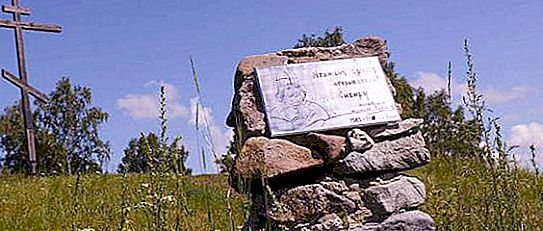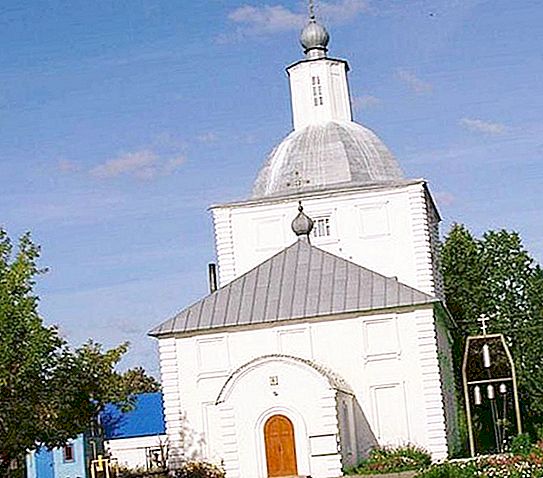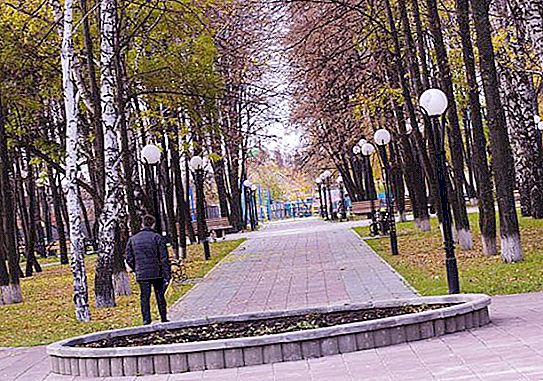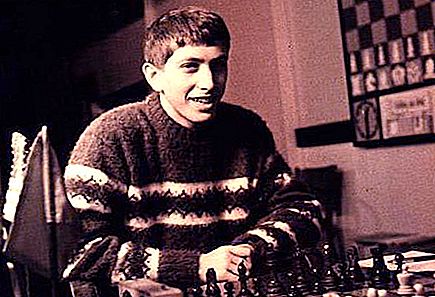In the Tyumen region, two villages are called Vagay. One of them is located in the Omutinsky district, the second, located to the north, is the center of the Vagai district. More recently, residents of the Siberian village of Vagay (northern) celebrated the 395th anniversary of its founding. To date, it had two names. Initially, at the foundation, the village was called Bogoslovskoe, later it was called Vagai, as it was located near the Vagai river, which flows into the Irtysh.

Where is
At a distance of 5 kilometers from the village of Vagai (northern) Vagai district of the Tyumen region is the confluence of the eponymous river in the Irtysh. The Wagai River is its left tributary. Moreover, the river has 2 estuaries. The first is natural. The second is man-made, dug in 1960 for the convenience of rafting wood.
At the mouth of the Vagai River there is Ermakova backwater. Historians suggest that Ermak died here. The village itself is located in the south of the Tyumen region. At a distance of 55 kilometers down the Irtysh River is the city of Tobolsk. It borders with the districts of the Tyumen and Omsk regions.
Background
In Siberia, when it was settled, there was an iron rule, which was adhered to: "At each capture - a prayer cross, in the village - a church, in the city - a monastery." This was done with one goal - to strengthen faith, support morally Orthodox Christians who are leaving for unknown lands. Often there were clergymen in military units. In each newly built settlement, the first thing to do was build a small wooden church. This was originally built in the village of Bogoslovsky (modern Vagai, northern).
The Orthodox Church, first of all, took care of the souls of the Orthodox. People here escaped from serfdom, convicts referred. As they said, having crossed the mountains of the Urals, Moscow’s power ended and the “freemen” began, in which Christian shrines were often violated. There were murders, polygamy and other serious sins. In addition, the Orthodox Church also had missionary goals - to turn to Christ the thousands of pagans, who were local residents. Often, service people and even governors did not constitute a role model. The absence of churches led to a decline in morality.
The first Assumption Monastery in Siberia, which is under the protection of the Tobolsk Kremlin, receives in 1612 huge land plots in the Irtysh valley, including those located on both sides of the Vagay River. The lands began to be developed, and already in 1623 a message appeared about the Vagai monastery patrimony. Five monastery courtyards appeared, including in the place of modern Wagai (northern).

History of the village
The history of the village of Vagay is closely connected with the history of the development of Siberia by Russian explorers. The main stream of Cossack detachments, settlers, merchants went inland along the mighty Siberian river Irtysh. The capital of Siberia in those days was the city of Tobolsk. The village of Bogoslovskoe, modern Vagai, was not far from the confluence of the Vagay River in the Irtysh and was originally part of the monastery lands. Vagay (northern) was formed as the monastery courtyard of the Assumption, later the Znamensky monastery.
In the “Boundary Book of the Sofia Patrimonies” dated 1659, it is recorded that the village of Bogoslovskoye is surrounded by pillars, and a tower near the gate. Inside the fence is the church of St. John the Evangelist, the cells of two old men and a migrant. Behind the fence there are stables and stockyards where workers live. It was the church that gave the name to the village - Theological. After it became known as Vagai.
The village grew slowly, for almost 300 years the population increased from 28 people, according to the monastery census of 1659, to 264 people in 1926. The population was engaged in raising livestock, plowing the land for rye and oats. The main occupation was hunting and fishing. Crafts such as carpentry, pottery and blacksmithing were also developed.
Soviet years
At the beginning of the twentieth century, the village had two schools, one of which was a parish church. The years of the revolution abruptly turned the life of the villagers in the other direction. The turbulent twenties gave way to years of collectivization. In the 20s of the last century, a feldsher point was opened, an agricultural artisanal partnership.
In the 30s of the twentieth century clubs were built, schools were opened, not only for children, but also for adults. The country struggled with a century of uneducated citizens. New timber industry enterprises, scaffolds, alloy raids were organized. All this touched and sat down.

During the war years, the Vagay (northern) Tyumen region was deep in the rear, continuing to supply the country with forest, rye and barley. Hundreds of Vagais went to the front, many of them did not return from the war. In memory of this, a monument was erected in the village.
The post-war years is a time of hard work throughout the country, which needed to rebuild cities and villages. For this, a large quantity of forest was needed, supplied by the districts of the Tyumen region. Vagai district is mainly focused on agricultural production and fishing industries, the main of which was and remains hunting.







